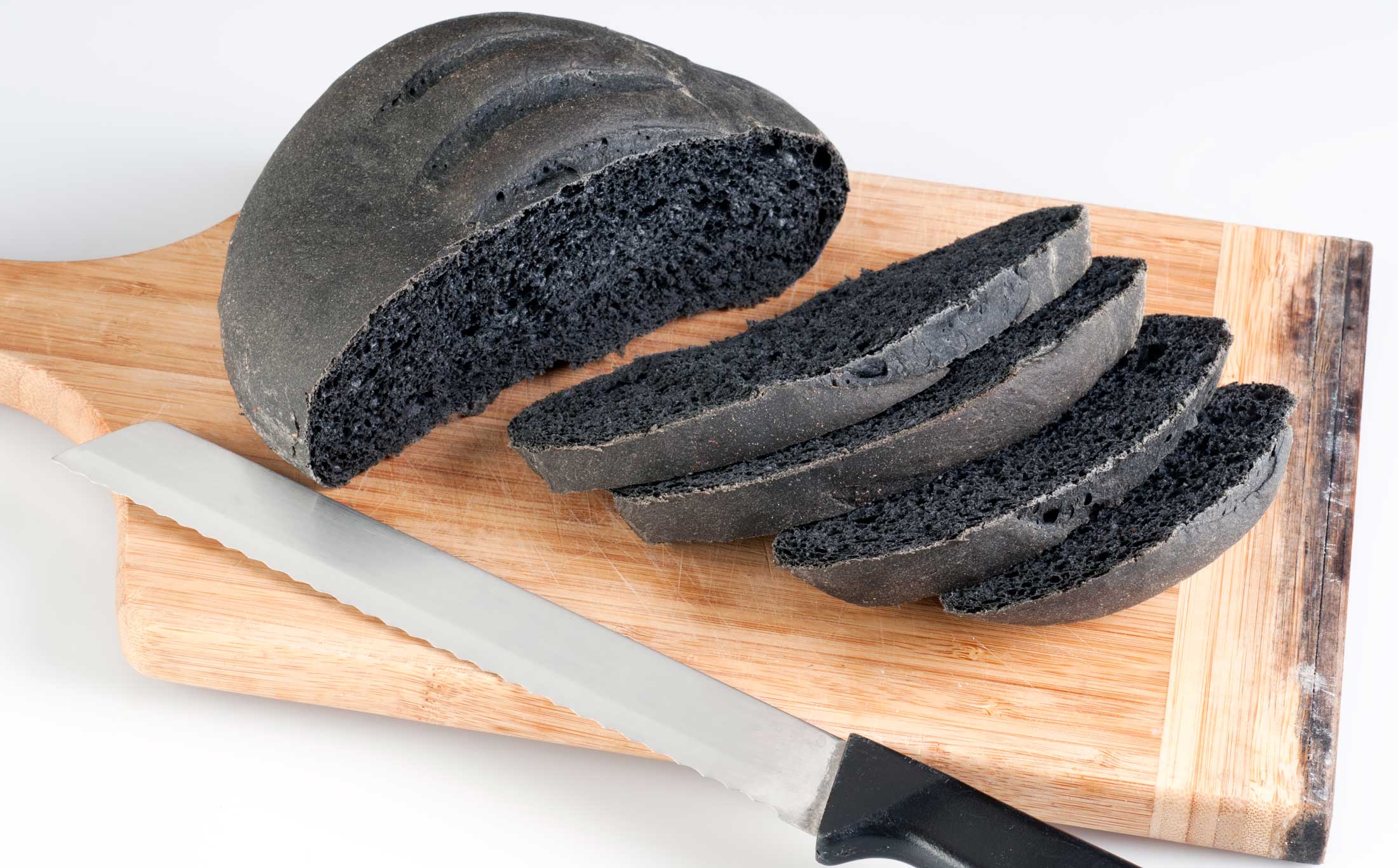“Black bread“, obtained by the addition of vegetable carbon, has gained public attention, and how could it not. This isn’t the typical rye or whole-wheat type bread which is a bit darker than your usual loaf, it is a loaf of bread that looks like it came out of Mount Vesuvius on a bad day.

6 things you should know about vegetable carbon according to Dr. Manuela, dietitian at Humanitas Hospital:
- Vegetable carbon or activated charcoal is a powder obtained from carbonized wood and it is therefore a natural organic substance which can be used as a color additive or as a food supplement. The supplements made from vegetable carbon are recommended for treating intestinal disorders, flatulence and bloating, due to its absorption properties.
- Vegetable carbon has a beneficial effect when it is consumed in 1 gram dosages at least 30 minutes before a meal and shortly after. Now consider the preparation of baked goods, 15-20 g of vegetable carbon are used per kg of flour, and it is deduced once the quantities are used and consumed as an additive in bread. This means that it is insufficient to have beneficial effects and therefore, it should be consumed as a supplement. The European Commission expressed itself in favor of the coal-based plants citing that “activated carbon helps reduce excessive postprandial flatulence.”
- In 2012, EFSA (the European Food Safety Authority) expressed that the use of vegetable carbon as a color additive is risk-free.
- Assessments from European authorities indicate that consuming vegetable carbon from baked goods can be done with confidence and risk-free. However, it is not yet possible to say that that it provides health benefits as an additive. Its addition as a dye in baked goods is a doubtful function because it is not yet known if these benefits are equally present in the moment in which the vegetable carbon is inserted as an ingredient in a complex food matrix.
- Although vegetable carbon can be used as a color additive (according to the EC Reg. No. 1333/2008), a general prohibition of any type of dye in bread and pizza does exist. Thus the baked goods that contain vegetable carbon cannot be marketed under the name “bread” and should be marked under the name “fine baked products.” In addition, when vegetable carbon is added as a color additive, it is forbidden to boast the beneficial effects for the human body.
- Vegetable carbon has the ability to bind anything that transits along the digestive canal, even nutrients such as certain vitamins and minerals, as well as medications, making them inaccessible. In general, there are no contraindications for the consumption of these types of foods. However, precisely because of their anti-nutritional action, it is recommended to avoid consuming it if you are simultaneously taking medications during meals or if you have a critical condition pertaining to your nutritional status.
Humanitas in numbers
-
3,400 Physicians
-
110,400 Annual surgeries
-
190,400 Annual Inpatient Admissions
-
928,000 Patients


